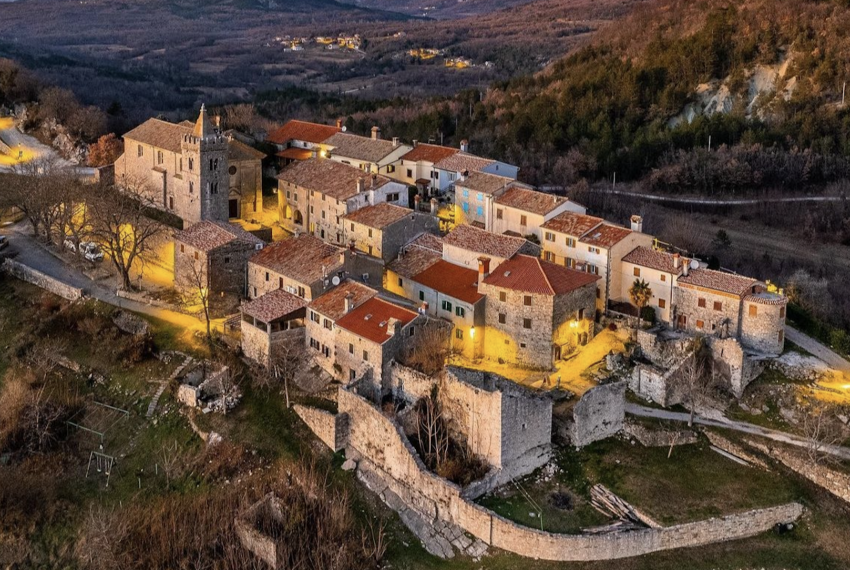Is it true that Hum, Istria is the smallest town in the world?
Hum is a charming little place in the heart of Istria, Croatia. Green hills and vineyards surround the town, which produces high-quality wines. A liqueur known as "biska" (mistletoe brandy) is also famous thing in Hum.
In October, Hum hosts a brandy exhibit, a competition for the best brandy in Istria.
If we speak in terms of elevation, the town sits at 349 meters. Hum town technically belongs to Buzet.
With its ancient walls, cobblestone streets, and just a handful of residents, it has captivated travelers and historians alike.
Today, you will learn about the rich history of Hum, its worth as a travel destination, and what makes it so unique.
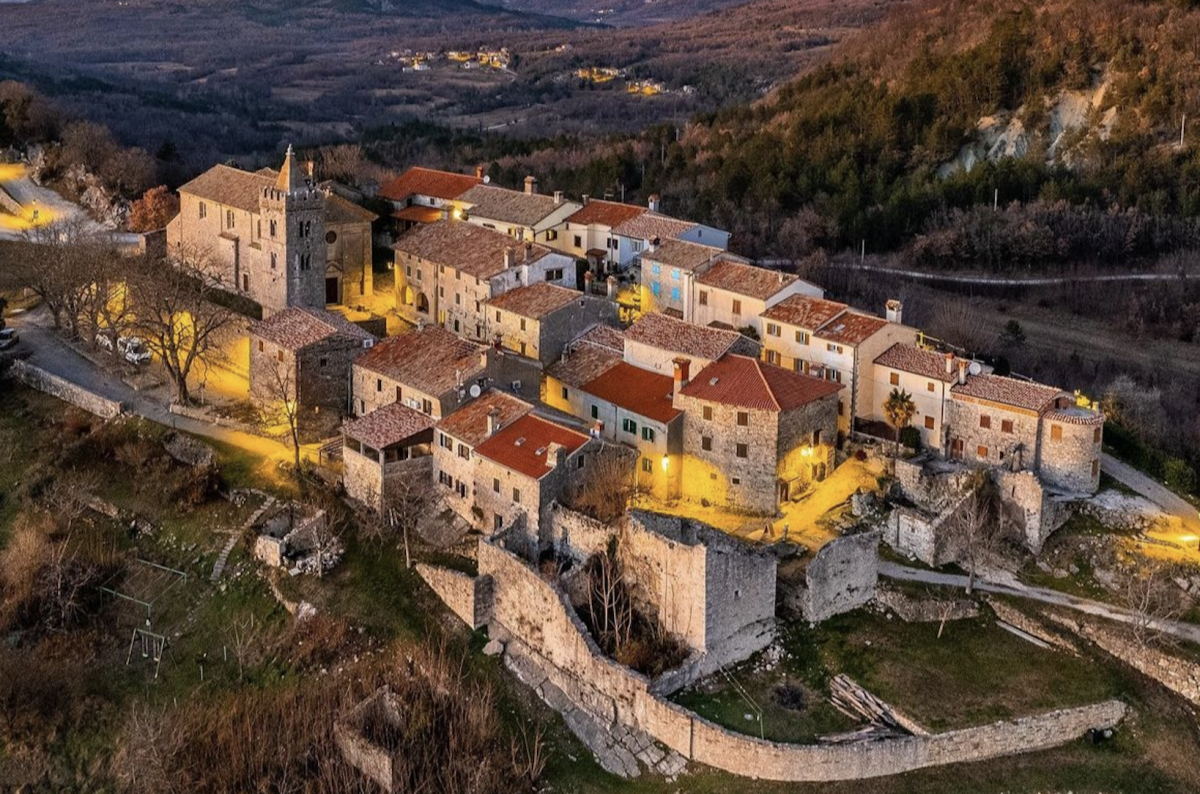
Photo credit: Zoran Bakić
Is Hum, Croatia worth visiting?
Absolutely! Hum, Croatia, is not just worth visiting - it's a must-see for travelers who love discovering hidden gems steeped in history.
Despite its small size, Hum is packed with cultural and historical significance. Walking through the town, you'll feel like you've stepped back in time, with its medieval architecture, stone houses, and a tranquil atmosphere that offers a unique escape from modern life.
The town boasts beautiful frescoes in its baroque church, and ancient stone carvings, surrounded by landscapes that will leave you in awe.
Whether you're an architecture enthusiast, a history buff, or simply looking for a peaceful retreat, Hum offers something special. Visitors are enchanted by its warm ambiance, local customs, and the warm hospitality of its residents.
Things to do in Hum, Croatia
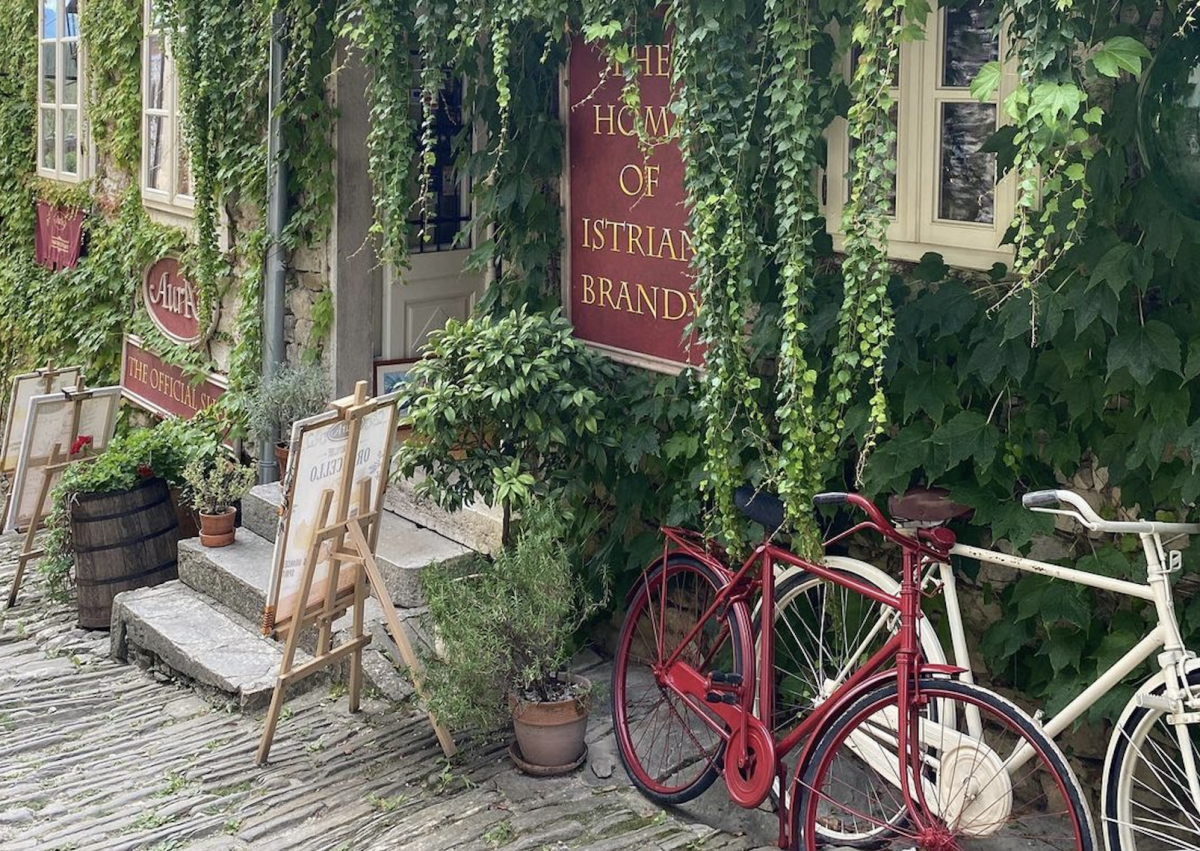
Photo credit: Marija Gverić
Hum may be small, but it offers several activities and attractions:
- Visit the Church of St. Jerome, and admire the beautiful 12th-century frescoes.
- The city walls and gate give a glimpse into Hum’s medieval past and provide an excellent photo opportunity.
- Take in the charm of this ancient town as you walk along its narrow streets lined with traditional stone houses.
- Hum offers a taste of traditional Istrian dishes (truffle cheeses and specialty salamis), with local wines, and olive oil that the region is famous for.
- Don't miss out on tasting "biska," a traditional mistletoe brandy.
Is Hum the smallest town in the world?
The smallest capital city in the world is Melekeok, the capital of the Republic of Palau, Micronesia.
We can not say that Hum is a city; it is more like a town.
The total Hum town area covers 13.0 km2, while the walls enclose an area about 100 meters long and 35 meters wide which is 3.5 km2.
We couldn’t find an official statement from the Guinness World Record Book, but many travelers consider Hum town to be one of the smallest towns in the world.
It's often debated whether Hum is truly a "city" by modern definitions, but historically, cities were recognized based on having city rights, not population size.
We will use the term “town”. Hum earned town status in medieval times, and its compact layout, complete with walls, a church, and a governing body, fits the criteria for what was historically considered a town.
What is the history of Hum, Croatia?
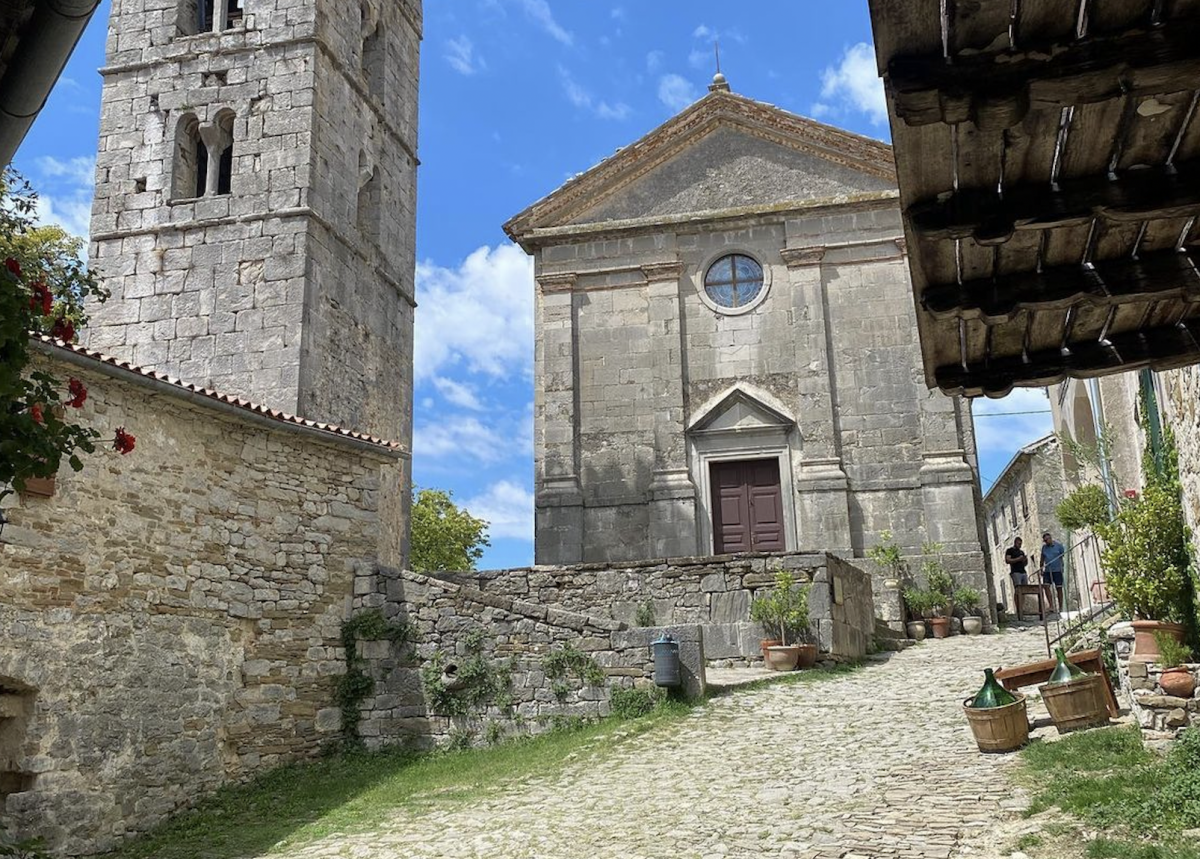
Photo credit: Marija Gverić
A legend says that Hum was created accidentally when the Giants ran out of stones in the valley of the Mirna River, so they decided to build this miniature town out of the rocks left over.
The history of Hum is as fascinating as the town itself. Its roots stretch back to the early medieval period, and the town has remained largely unchanged for centuries.
Hum was first mentioned in written documents in the 12th century, and its original name, Cholm, reflects its early Slavic influence. The town was built as a fortification on a hilltop, a common practice during the medieval era to defend against invaders.
Throughout its history, Hum has been a part of various empires and kingdoms, including the Byzantine Empire, the Venetian Republic, and the Austro-Hungarian Empire.
Despite changing rulers, Hum has retained its traditional way of life, with the local culture remaining deeply tied to its Istrian roots.
Hum town is associated with the Glagolitic script, one of the oldest Slavic alphabets. Two Glagolitic writings can be found on the west town gates.
It will be the “Town of Hum Day” that brings the new town patron for a year next year - the gates will again be solemnly opened.
Hum town in Istria on the map
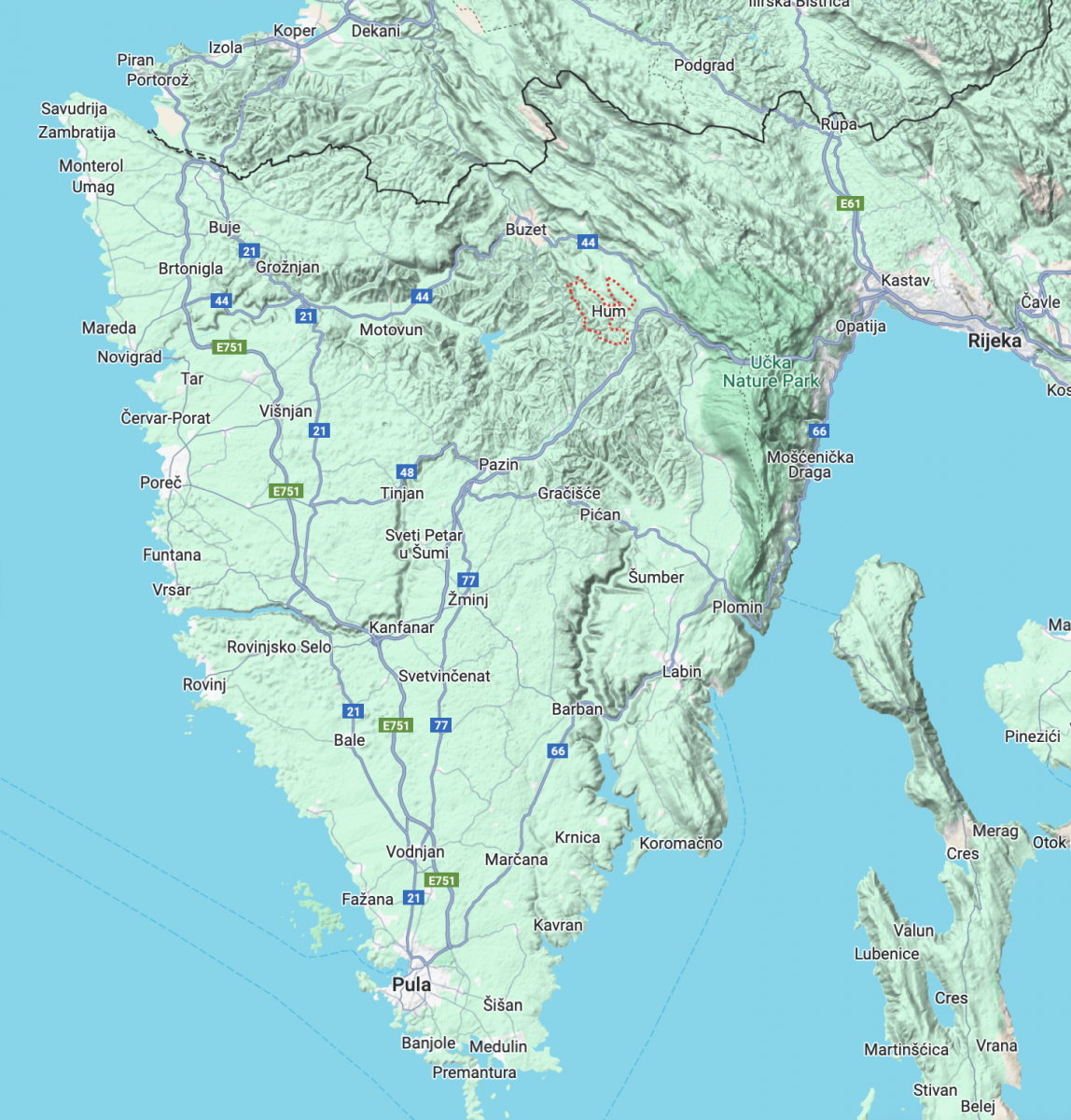
Photo credit: google maps
To truly appreciate the compact nature of Hum, it's essential to see it on a map.
Located in the north-east part of the Istrian Peninsula, Hum is nestled between Buzet and Roč.
Its strategic hilltop location gives it stunning views of the surrounding countryside, and the nearby forests and valleys provide a picturesque backdrop.
Most visitors drive to Hum from larger towns like Rovinj or Pula, and the journey is part of the charm.
Winding roads through lush landscapes lead you to this tiny town, where the stone structures blend seamlessly with the natural surroundings.
The map of Hum is so small that you can walk across the entire town in a matter of minutes, but every corner offers something new to discover.
Explore the Glagolitic Alley
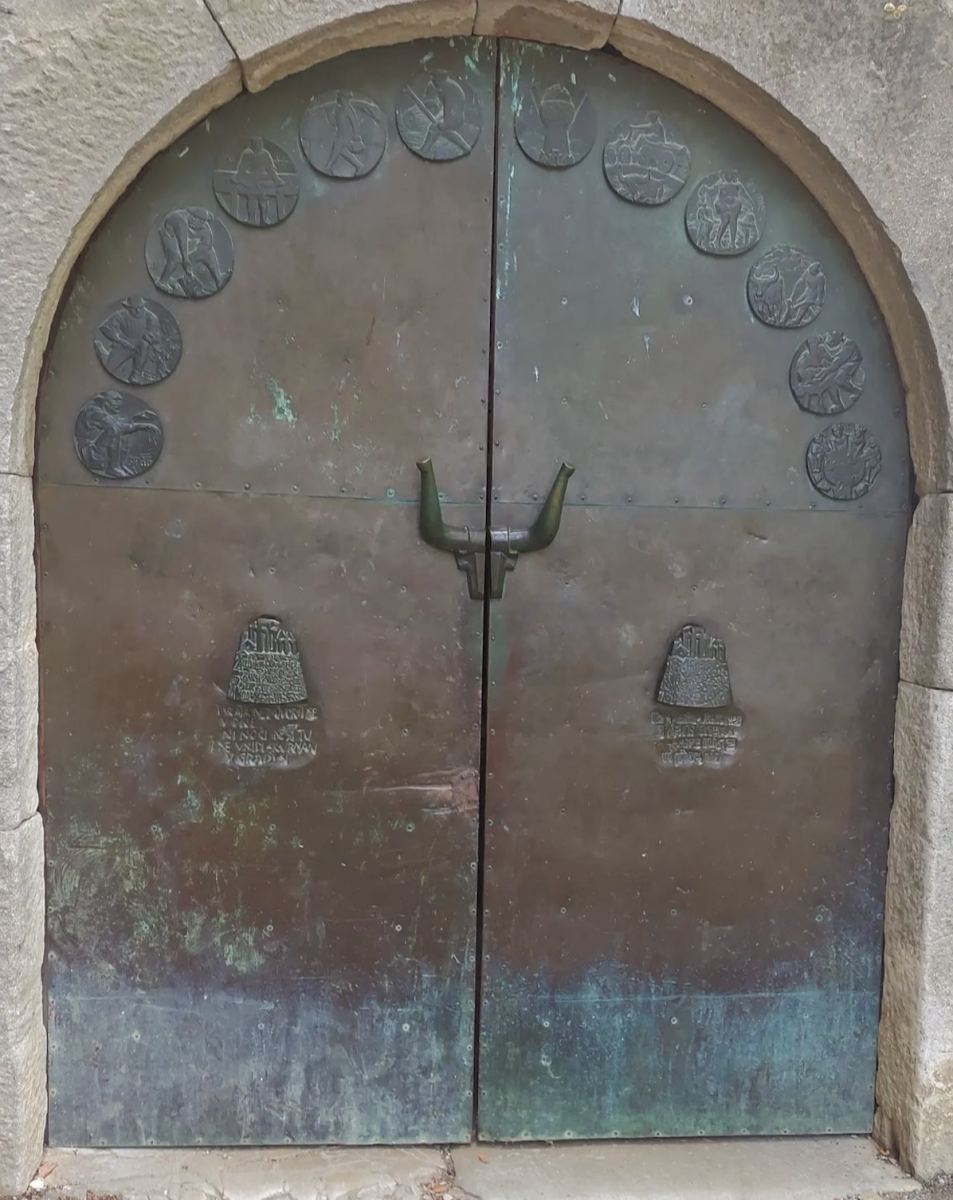
Photo credit: Zika Narsia
This unique “outdoor museum” showcases the Glagolitic alphabet (glagoljica) with sculptures and monuments along the road leading to Hum. The Alley (Aleja glagoljaša) stretches 7 km from Roč to Hum.
In the Glagolitic Alley you will find many monuments:
- Pillar of the Chakavian Parliament
- Table of Cyril and Methodius
- Seat of Clement of Ohrid
- Glagolitic lapidary
- Gorge of the Croatian Lucidar
- Belvedere of Gregory of Nin
- Rise of the Istrian Demarcation
- Wall of Croatian Protestants and Heretics
- Resting place of Jacques Yuri
- Monument of resistance and freedom
- Doors of Hum
The Glagolitic Alley is a must-see! We recommend heading towards the Glagolitic Alley after you taste traditional Istrian food and spirits.
What is the population of Hum, Croatia in 2024?
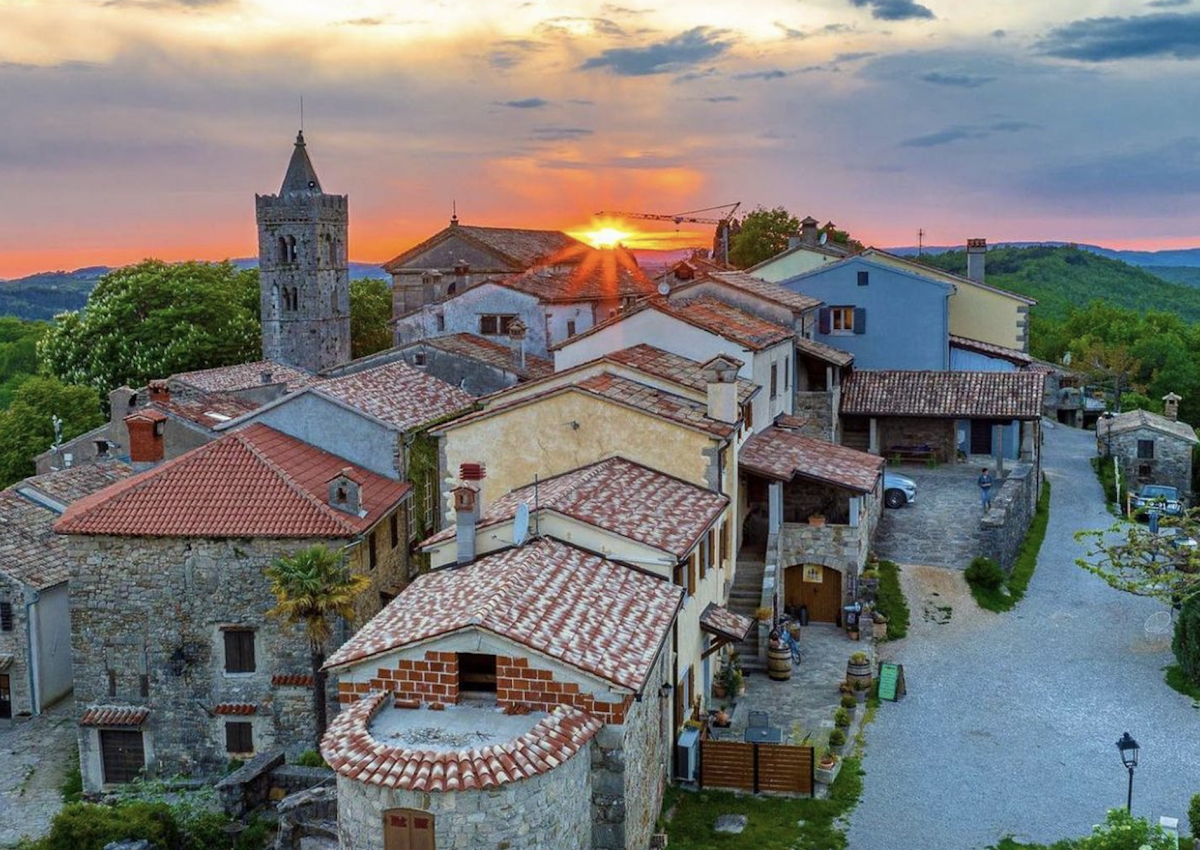
Photo credit: Zoran Bakić
As of the most recent estimates for 2024, Hum's population remains small, with less than 30 residents.
Despite its tiny population, Hum continues to attract a steady stream of visitors each year, drawn by its historical significance and picturesque charm.
The small population contributes to the peaceful, almost timeless atmosphere of the town. The residents of Hum are known for their hospitality and are proud of their town’s unique claim to fame as the smallest city in the world.
How old is the town of Hum?
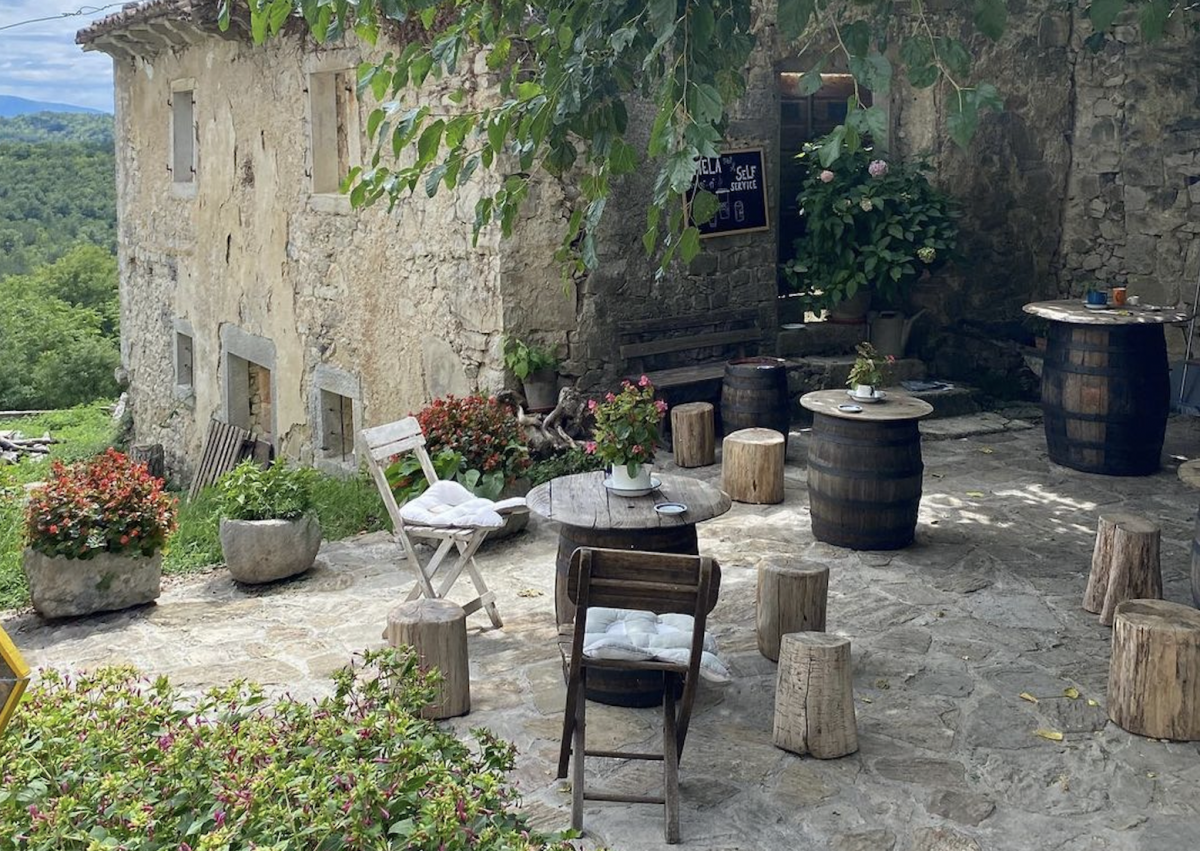
Photo credit: Marija Gverić
Hum is a fairytale-like settlement approximately 1,000 years old, with its first official mention dating back to the 12th century.
However, the area surrounding Hum has likely been inhabited much earlier, given its strategic hilltop location and fertile surroundings. The town's well-preserved medieval structures give visitors a glimpse into its long and storied past.
Walking through its ancient streets feels like stepping into a living museum, where history is tangible at every turn. It does have a few souvenir shops and konobas, but not enough to lose its authenticity.
Hum offers a one-of-a-kind experience if you're interested in medieval history, local Istrian culture, or simply seeking a peaceful escape.
Its rich heritage and serene surroundings make it a must-visit destination in Croatia. If looking for accomodation in Central Istria, explore Euroturs's apartments in Central Istria.





